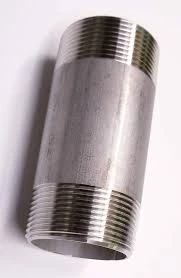-
Cangzhou Yulong Steel Co., Ltd.
-
Phone:
+86 13303177267 -
Email:
admin@ylsteelfittings.com
- English
- Arabic
- Italian
- Spanish
- Portuguese
- German
- kazakh
- Persian
- Greek
- French
- Russian
- Polish
- Thai
- Indonesian
- Vietnamese
- Zulu
- Korean
- Uzbek
- Hindi
- Serbian
- Malay
- Ukrainian
- Gujarati
- Haitian Creole
- hausa
- hawaiian
- Hebrew
- Miao
- Hungarian
- Icelandic
- igbo
- irish
- Japanese
- Javanese
- Kannada
- Khmer
- Rwandese
- Afrikaans
- Albanian
- Amharic
- Armenian
- Azerbaijani
- Basque
- Belarusian
- Bengali
- Bosnian
- Bulgarian
- Catalan
- Cebuano
- China
- China (Taiwan)
- Corsican
- Croatian
- Czech
- Danish
- Esperanto
- Estonian
- Finnish
- Frisian
- Galician
- Georgian
- Kurdish
- Kyrgyz
- Lao
- Latin
- Latvian
- Lithuanian
- Luxembourgish
- Macedonian
- Malgashi
- Malayalam
- Maltese
- Maori
- Marathi
- Mongolian
- Myanmar
- Nepali
- Norwegian
- Norwegian
- Occitan
- Pashto
- Dutch
- Punjabi
- Romanian
- Samoan
- Scottish Gaelic
- Sesotho
- Shona
- Sindhi
- Sinhala
- Slovak
- Slovenian
- Somali
- Sundanese
- Swahili
- Swedish
- Tagalog
- Tajik
- Tamil
- Tatar
- Telugu
- Turkish
- Turkmen
- Urdu
- Uighur
- Welsh
- Bantu
- Yiddish
- Yoruba

Sep . 04, 2024 04:37 Back to list
all flange types
Understanding All Flange Types A Comprehensive Guide
Flanges are integral components in piping systems, providing a reliable method for connecting sections of pipe, valves, pumps, and other equipment. They serve not only to create a tight seal but also to facilitate easy disassembly for maintenance and replacement. The variety of flange types available allows engineers to select the most appropriate design for specific applications. This article will explore the different flange types, their characteristics, and their applications.
1. Weld Neck Flanges
Weld neck flanges have a long tapered hub that gradually transitions to the pipe, allowing for a strong welding connection. This design is particularly beneficial for high-pressure applications as it reduces stress concentration. Weld neck flanges are commonly used in power plants, chemical processing, and other industrial applications where durability and safety are critical.
2. Slip-On Flanges
Slip-on flanges are designed to slide over the pipe and are then welded in place. They have a lower manufacturing cost compared to weld neck flanges and are easier to install. However, they are typically used in lower-pressure applications. Slip-on flanges are common in water and HVAC systems, where the need for robust connections is less stringent.
Blind flanges are used to close the end of a pipe system. They do not have a hole in the center, making them ideal for isolating sections of piping during maintenance or testing. Blind flanges are critical in systems that require regular inspection, as they provide a sturdy seal that can handle high pressure.
all flange types

4. Socket Weld Flanges
These flanges are used for small-diameter, high-pressure piping systems. The pipe is inserted into the flange socket and then welded both inside and outside, creating a strong joint. Socket weld flanges are commonly employed in chemical and oil industries due to their ability to withstand high pressure and resistance to vibration.
5. Threaded Flanges
Threaded flanges can be screwed onto a pipe, making them an excellent choice for systems that do not require welding. They allow for easier disassembly and are suited for low-pressure applications. While they do not provide the same strength as welded flanges, threaded flanges simplify maintenance tasks.
6. Lap Joint Flanges
Lap joint flanges are designed to be used with a stub end and are ideal for systems that need to be disassembled regularly. These flanges enable a smooth alignment of piping and are widely used in applications involving corrosive materials, as they allow for easy replacement of the piping sections without needing to remove the entire flange assembly.
Conclusion
Choosing the right flange type is essential for ensuring the safety, efficiency, and longevity of a piping system. Each flange type serves a specific purpose and is suited to particular applications, balancing factors such as pressure, temperature, and ease of maintenance. Understanding these different flange types allows engineers and technicians to make informed decisions, contributing to the successful management of various industrial systems. Whether in high-pressure environments or standard applications, flanges play a crucial role in mechanical engineering and fluid dynamics.
Latest news
-
ANSI 150P SS304 SO FLANGE
NewsFeb.14,2025
-
ASTM A333GR6 STEEL PIPE
NewsJan.20,2025
-
ANSI B16.5 WELDING NECK FLANGE
NewsJan.15,2026
-
ANSI B16.5 SLIP-ON FLANGE
NewsApr.19,2024
-
SABS 1123 FLANGE
NewsJan.15,2025
-
DIN86044 PLATE FLANGE
NewsApr.19,2024
-
DIN2527 BLIND FLANGE
NewsApr.12,2024
-
JIS B2311 Butt-Welding Fittings LR/SR 45°/90° /180°Seamless/Weld
NewsApr.23,2024











